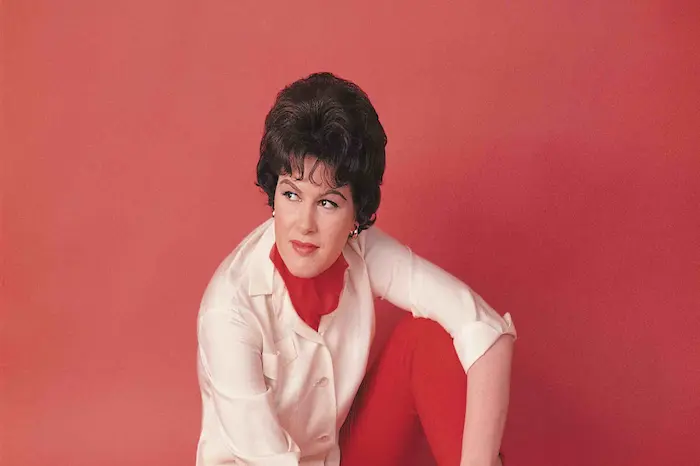The 1950s was a significant decade for country music. This era brought country music into mainstream culture. It marked a time of change and growth for the genre. This article explores the rise, key artists, and impact of 1950s country music.
I. The Rise of 1950s Country Music
1. Post-War Boom
After World War II, America experienced economic growth. This prosperity allowed more leisure time. People turned to music for entertainment. Country music became a favorite choice. It spoke to the everyday experiences of many Americans.
2. The Influence of Radio
Radio played a crucial role in spreading country music. Shows like the Grand Ole Opry became popular. These shows introduced country music to a broader audience. They featured live performances and helped launch the careers of many artists.
3. The Role of Record Labels
Record labels recognized the potential of country music. Companies like RCA and Decca signed country artists. These labels produced and distributed records widely. This made country music accessible to more people.
II. Key Artists of the 1950s
1. Hank Williams
Hank Williams is often called the “King of Country Music.” He wrote and performed many hits. Songs like “Your Cheatin’ Heart” and “Hey, Good Lookin'” became classics. His music was emotional and relatable. Williams influenced many future country artists.
2. Patsy Cline
Patsy Cline was a pioneering female country artist. She had a powerful voice and emotive style. Her hits included “Walkin’ After Midnight” and “Crazy.” Cline’s success paved the way for women in country music.
3. Johnny Cash
Johnny Cash brought a unique sound to country music. His deep voice and storytelling lyrics stood out. Hits like “I Walk the Line” and “Folsom Prison Blues” became popular. Cash’s music crossed over to other genres, broadening his appeal.
4. Lefty Frizzell
Lefty Frizzell was known for his distinctive singing style. His songs often told stories of love and heartbreak. Hits like “If You’ve Got the Money, I’ve Got the Time” made him famous. Frizzell influenced many other country artists.
III. The Impact of Honky Tonk
1. Honky Tonk Sound
Honky Tonk music became popular in the 1950s. It featured a more upbeat and danceable style. This music was often played in bars and dance halls. It had a raw and energetic feel.
2. Key Honky Tonk Artists
Artists like Ernest Tubb and Hank Thompson were pioneers of Honky Tonk. Their music was lively and engaging. Songs often featured themes of love, loss, and nightlife.
IV. The Evolution of Country Music Instruments
1. Electric Guitar
The 1950s saw the introduction of the electric guitar in country music. This added a new sound and energy to the genre. It allowed for more dynamic performances.
2. Steel Guitar
The steel guitar also became popular. It added a distinctive twang to country music. This instrument became a staple in the genre.
3. Fiddle and Banjo
Traditional instruments like the fiddle and banjo remained popular. They continued to provide a link to the genre’s roots.
V. The Role of Television
1. Country Music on TV
Television helped popularize country music. Shows like “The Ozark Jubilee” and “Hee Haw” featured country performances. These shows reached a wide audience. They helped bring country music into American homes.
2. Elvis Presley’s Influence
Elvis Presley started as a country artist. His appearances on TV helped popularize country music. His rockabilly style blended country and rock, attracting younger audiences.
VI. The Crossover Appeal
1. Blending Genres
The 1950s saw country music blending with other genres. Rockabilly, a mix of rock and country, became popular. Artists like Jerry Lee Lewis and Carl Perkins played this style.
2. Broader Audience
This blending of genres helped country music reach a broader audience. It appealed to both country and rock fans. This crossover helped grow the genre’s popularity.
VII. The Business of Country Music
1. Nashville’s Rise
Nashville became the center of the country music industry. Many artists and record labels were based there. The city’s music scene thrived, earning it the nickname “Music City.”
2. Country Music Associations
Organizations like the Country Music Association (CMA) were formed. They promoted country music and supported artists. These associations helped professionalize the industry.
VIII. The Legacy of 1950s Country Music
1. Influence on Future Artists
1950s country music influenced many future artists. The themes, styles, and sounds of this era can be heard in later country music. Artists like Willie Nelson and Dolly Parton were inspired by 1950s country music.
2. Cultural Impact
Country music of the 1950s left a lasting cultural impact. It shaped the genre and its place in American culture. The songs from this era are still beloved today.
See Also: How Many Country Music Awards Are There Each Year?
IX. Conclusion
The 1950s was a golden era for country music. It saw the rise of many legendary artists. The genre grew and evolved during this time. Country music became a significant part of American culture. Its legacy continues to influence music today. The 1950s laid the foundation for the future of country music, making it a decade to remember.

